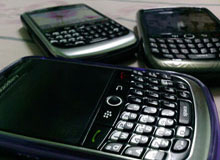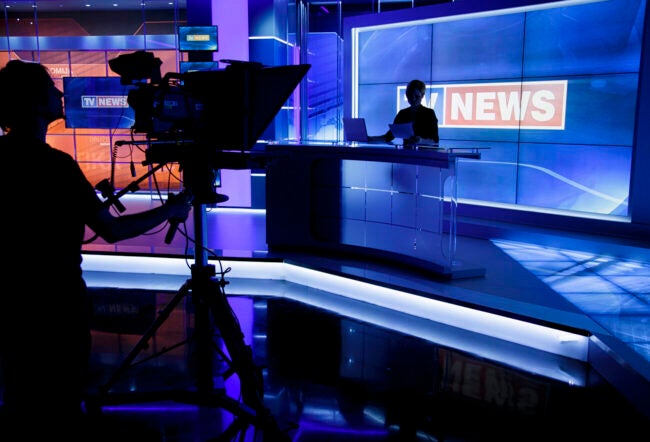While the shift from dictatorship to democracy in the Middle East has been difficult, some consider a bellwether of the post-revolution success story the ability of countries to carry out free and fair elections. This year, Egypt and Tunisia will again be put to the test when holding their parliamentary and legislative elections. Ensuring a smooth process could lie, in part, in a voter’s cell phone.
Civil society groups, entrepreneurs and developers are finding ways to capitalize on widespread mobile phone penetration in the Middle East and North Africa to boost both awareness around electoral participation as well as monitoring of the voting experience. They are employing SMS and voice-based reporting schemes to keep an eye on polling stations and undertake public opinion polls. They are also utilizing crowd-sourcing, social media and interactive mobile applications to collect data directly from voters. New mapping technology is allowing them to present voting statistics in cutting-edge formats.
There are challenges, however. The coding for some programs can be complicated for NGO election monitors; governments may not be responsive to reported election complaints; and illiteracy and funding can be hurdles to implementing such initiatives. Still, high-tech tools could play a big role in the oversight of upcoming elections, especially at a time when several Arab governments are setting new precedents for how their institutions should operate.
Experiments in using mobile phone technology in election monitoring and voter engagement are already under way in several Arab countries.
In 2011, Project Rakeeb, made up of two established civil society groups, partnered with the firm Advanced Computer Systems to screen Egypt’s first post-revolution parliamentary elections. Observers at polling stations used their cell phones to send text messages about what they witnessed to a data center, where specialists then processed and mapped the reports. The group says it was the first time this type of innovative, statistics-based method — known as parallel vote tabulation — was used in the country.
Although social media networks like Facebook are often credited with aiding the Arab world’s revolutions, mobile phones remain a more powerful tool, experts argue, given their reach.
"At the end of the day, the reality is that most people have a mobile phone and really only a third of people, especially in the developing world, have consistent access to Internet," said Leila Dal Santo, community projects manager for Souktel, a Ramallah, Palestine-based company, during a conference in Tunisia’s capital last month organized by FW: [Forward], an initiative from Democracy International, Inc., on technology and elections.
Tapping Mobile Tech
When Tunisia held its first national elections in 2011, after uprisings ousted former President Zine El Abidine Ben Ali, Souktel partnered with the Tunisian Bar Association to set up a hotline for citizens to SMS incidents of electoral fraud and voting irregularities. A team of 80 lawyers received the roughly 1,000 reports in a customized web platform, which allowed them to classify the complaints and track their responses, so that only one attorney was assigned to each report.
Lawyers followed up directly with the those sending the texts to get details of the events. In the system, however, only a person’s mobile number was available, to guard their identities. "You still want to preserve that level of anonymity," Dal Santo said. "You don’t want people to feel like they’re going to be persecuted for reporting an incident of election fraud. I think that’s key — that people feel they can participate in the electoral process in a way they feel it is safe, they feel protected."
Besides monitoring, the company has also tapped mobile phone technology for surveying and voter education. Last year, in Egypt, Souktel targeted women and youth, sending them informational SMS alerts on the voting and registration procedures, and asking for their feedback via text on the electoral process. And in Libya, they worked with Al Jazeera to take stock of residents’ views in the lead up to last year’s poll, asking: "Will you take part in the July 7 elections and why? What do you hope to achieve in these elections?" The project received some 5,000 responses. A map displays the names and locations of the participants, if they chose to provide those details.
"This was really, for a lot of Libyans, the first time that they could safely, and again without free of persecution, contribute to a healthy debate about the elections," Dal Santo said. "This is another way to safely contribute to the national dialogue in a way that it didn’t feel like they were going to be hounded down later."
For independent election monitoring groups that may not have the resources to hire firms to do opinion polling, some developers are providing their mobile phone-based programs available for free. For instance, Formhub, an open source tool created through the Earth Institute at Columbia University, allows people to design surveys and questionnaires, say on polling inconsistencies, in Excel and then distribute them on Android devices or online. As the responses are collected, there are features that let users interpret and visualize the data. In place of paper surveys, program developers say mobile devices carry not just the data but also record timestamps and GPS coordinates and allow for photos, upping the reporting accuracy.
Some Limitations
As an election monitoring medium though, there are limits to SMS and cell phone technology. Namely, it’s dependent on users being able to read and write.
"You can see in Tunisia and Lebanon, the number of illiterate people are relatively low, but if we go to some of the other countries, even though literacy rates seem high, there are still millions of people who can’t read and write, and usually the great percentage are women," said Brenda Burrell, technical director of the Zimbabwe-based Freedom Fone, an interactive voice-response data collection system. "If we don’t introduce tools that people can use with their voices, we basically take away the opportunity of all those people to contribute information-sharing."
Burrell acknowledged that voice is not an easy medium to manage, but she said it’s compelling and harder to fake when conveying reports. The content can also be easily transferred to public outlets like radio broadcasts. Her software platform, Freedom Fone, doesn’t require the Internet or smartphones, but instead relies on SIM cards and conventional phone service to get running.
Deploying election monitors can be expensive for organizations and in some countries, governments may restrict observers from certain locations or impose other constraints, she said. That’s why it’s critical to develop instruments that allow people to report what they’re seeing.
"There’s a lot of stuff that’s going on that we don’t get to see or hear about," Burrell said. "The big challenge, for those of us who mobilize around the elections, is that the election cycle lasts a lot longer than the election itself. And our challenge, really, is how to complete the informational picture knowing that elections monitors are on the ground for a very short time in the duration of the election cycle."
In a similar vein, Dal Santo of Souktel said they also offer voice-based services. An example includes an audio library service they provided to Somali citizens, who could call a hotline and learn more about civic subjects such as the constitution-drafting process. Such setups are ideally "reverse-charge," she said, so that callers don’t have to pay.
Once the job of collecting and analyzing data is done, how the information is presented can be crucial in making it relevant. Various visualization tools are helping election monitors and officials enliven their findings.
Eric Gundersen, president of Development Seed, fashions it as storytelling. Through MapBox, his open source software, people can visualize their data by layering different strains of information onto custom maps, from vote counts at polling stations down to details about literacy and population and even the terrain at specific points. The maps can then be published online. This kind of stacking of various data sets, he says, makes identifying patterns – that aren’t otherwise obvious – possible.
"You just can’t do that when data is locked into a PDF," Gundersen said. With layers of context, maps can act as a canvas for communicating and telling that story. "Look at your data and tell a story around that data."
Development Seed applied mapping data tools in Afghanistan’s 2009 presidential elections and is now preparing for the country’s elections next year. "In the case of 2014 prep in Afghanistan, what we’re doing is our open data work is going to help domestic observers, international observers, the government, civil society organizations and the media," and those entities will be able to deliver that data more efficiently to the public, Gundersen said.
As such countries rebuild their institutional foundations, he hopes data collection and presentation becomes a priority. "Data is essential national infrastructure — just as important as the roads, just as important as telecommunications infrastructure."
Connecting Dots
While mobile phone and SMS technology might have greater reach now, many entrepreneurs say potential lies ahead in social media and mobile applications as election monitoring tools.
Jorge Soto, co-founder of Citivox, a startup using crowd-sourcing technology in Mexico to enhance civic engagement and transparency, said he uses "integrated reporting channels" that include SMS and social media sources when collecting reports from people on elections and other fronts.
"We need to close the feedback loop," Soto said. "We need to understand that we cannot separate civic life with social life…we are already talking on Twitter, on Facebook, so we just need to connect the dots."
Citivox worked in Yemen’s post-revolution elections to collect SMS incident reports, with about 8,000 coming from citizens and 1,000 coming from official observers. Additionally, last year, the company worked with an Egyptian organization called Dostour to engage people over Facebook on the nation’s new constitution, wherein folks downloaded the draft of the constitution and they were asked to dialogue on specific topics. It fetched 68,000 participants and because it was on Facebook, Citivox was able to derive demographics on respondents. Soto said demographics are very important for institutions when making decisions. Elsewhere, in Venezuela’s elections, the company analyzed Twitter to ascertain which phrases were used most in discussing the elections, identifying who said them and even pinpointing what words appeared to get people to participate.
Many organizations undertake election monitoring, but streamlining their efforts can make them more influential. That’s what Citivox found when it started out in Mexico’s 2009 midterm elections. Soto said there were about a dozen groups with the similar aims and his company was able to align them on the same high-tech reporting platform to track elections. Security is a priority, he said, as hackers have tried to hit the system, so details on citizens or monitors sending in election reports are encrypted.
Independent groups using such technology are, in a way, providing a service that some governments are unable to perform, because their operations lack that level of sophistication. To make the point, Soto displayed photos of authorities in Mexico’s "department of administrative modernization" doing analytics on a dry-erase marker board; managing reports with stacks of file folders; and carrying out "real-time mapping" with a map pasted to a wall.
"This is how the government is doing analytics in many countries, not only Mexico," Soto said. It’s important to link the work of outside groups with what’s going on at the top. "The governments, as long as they don’t see themselves within this network, we will not have a direct conversation with them." The technology provides "tools that give us [the] chance to reframe or rejuvenate our institutions."
Emerging Tools
Other tools emerging from the Middle East and North Africa region include applications and services that look to the media as a space for gathering views and trailing issues. In Tunisia, Jazem Halioui said media monitoring can improve election and transition processes. His startup WebRadar provides meticulous monitoring of news, social media and blogs in Arabic, French and English, offering to collect and clean content on specific topics or events. They then extract knowledge on social engagement, audience and other areas to create analytical and statistical reports. Take Tunisia, for instance, where the company monitors almost 1,500 Facebook pages, 2,000 Twitter users, 500 blogs and 100 electronic journals. Such a portal could help with monitoring events like elections.
Meanwhile, in Lebanon, tech entrepreneur Mark Malkoun’s citizen journalism mobile application, Completure has taken off recently under the tag of supplying "decentralized news." When people spot an event, they can upload a photo and create a "mini story" that is shared with others through the free app. The images are geotagged and users vote on the stories, creating a kind of top news feed that is an alternative to major media outlets. The service also runs live police scanners from 19 countries.
"We don’t accept any texts; we only use images," Malkoun said. "We make sure that we verify the picture was taken by the phone itself."
Malkoun said the app now has a good user volume and ranking in the app store. As an vehicle for catching micro-incidents, reported on-the-ground from individuals, it could prove to be a useful device for observers monitoring large-scale elections, especially in terms of happenings that get left out of mainstream news coverage.
How all of these state-of-the-art tools will be used in forthcoming elections remains to be seen. But observers cite an exceptional opportunity for Arab countries to get into the game as post-revolution societies redefine electoral participation in the region.



